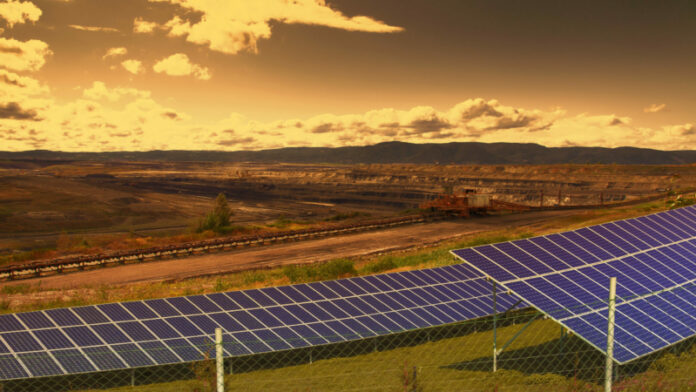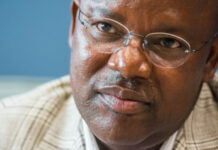
SOUTH Africa has had energy shortfalls for the past 16 years, but to date there have been totally inadequate measures to add new capacity to the grid. The crisis has escalated significantly over the past year, and currently a shortfall of 6,000MW is the norm, estimates the Solidarity Research Institute (SRI).
Ratings agency Moody’s said in its latest in-depth report, issued in June, that the progress in new build programmes will take time and require significant investment in network infrastructure.
South Africa’s energy mix is dominated by coal-fired power, and the decline in the energy availability factor (EAF) of these power stations has plunged the country into the worst energy crisis in decades. The EAF of South Africa’s coal fleet has tumbled from 82% in 2012 to the current lows of 52,3%.
In 2022, 11,8 terawatt hours of power were shed, amounting to 5% of electricity demand. In 2023, this ratio increased to 15% in the first five months of the year.
The Integrated Resource Plan (IRP), the country’s blueprint for future energy generation, was last updated in 2019 and is now hopelessly outdated, according to the SRI. The IRP doesn’t consider that renewable energy provides the least-costly option and instead focuses on expanding generation through coal, gas and nuclear power.
Mining side response
In 2022, President Cyril Ramaphosa announced the removal of the licensing threshold for private electricity generation, and the country’s mining sector lost no time in embarking on ambitious building programmes to enable renewable energy generation capacity. Some of the most notable projects are Gold Fields, with its 50MW, and Pan African Resources, with 10MW solar PV plants. African Rainbow Minerals, Tronox Mineral Sands and Harmony Gold followed suit, and are building renewable energy plants that will total 330MW, according to the Minerals Council South Africa’s latest Integrated Annual Review. The projects undertaken by mining companies are expected to exceed R150bn.
SRI head Connie Mulder says that, insofar as mining companies intend to use their renewable energy generation projects for their own use, it’s pretty much “plug and play”. But with investments of this scale, one would ideally want to sell electricity back to the grid – and that’s where the hurdles remain.
Moody’s reports that the additions of private power generation will depend on the availability of connections to the grid, which is limited.
The Minerals Council says wheeling arrangements – the process of moving privately generated power to customers across Eskom-owned power grids – are still a challenge for municipalities and there needs to be a wheeling framework at municipal level. The National Energy Regulator of South Africa (Nersa) also needs to undertake cost-of-supply studies to approve municipal wheeling. But most municipalities have been either unwilling or unable to establish wheeling frameworks, says Mulder.
“The private sector is adding almost 1,000MW of generation capacity per month; however, in order to dispatch this energy, a proper wheeling tariff scheme needs to be in place. At the moment the wheeling-tariff scheme is woefully inadequate, with wildly varying tariffs – or in some municipalities, none at all,” says Mulder.
He points out that Eskom charges a R6,24kwH wheeling tariff for less than 300km in peak-times, which is discouraging private generation and distribution.
“Given the fact that several high-voltage lines in traditional renewable energy areas are at capacity, a discount on wheeling from more connected areas could incentivise quicker private generation and get the capacity online quicker.”
He uses the following example: granting a 20% discount on wheeling tariffs in Mpumalanga for five years would significantly increase the uptake of solar and wind generation there. Mpumalanga already has extensive high-voltage capacity that can be well utilised.
Nersa and Eskom should therefore urgently publish wheeling tariffs that will incentivise private generation and transmission, and favour areas that are more easily connected to the grid.
Jan Fourie, general manager at Scatec, a renewable energy provider, says wheeling was successfully used in the Darling Wind Farm project in the Western Cape, as well as the Bio2Watt biomass plant in Bronkhorstspruit. The latter has supplied renewable electricity to BMW’S Rosslyn plant in Pretoria since 2015.
Lessons from Vietnam
In a submission to electricity minister Kgosientsho Ramokgopa titled ‘Fixing South Africa’s electricity crisis’, the SRI used Vietnam as a case study for how South Africa could get out of its energy crisis. Having had a state-owned monopoly similar to Eskom, Vietnam also limited private sector participation in electricity generation until the country started experiencing severe power shortages in 2007, with 14 blackouts per day.
In 2017, Vietnam embarked on a radical policy shift, implementing a feed-in tariff scheme for solar power installations. “Commercial solar plants could sell electricity at a fixed rate, while rooftop solar from individuals would get reimbursed annually if the electricity generated was more than the electricity consumed. This created certainty for commercial investors regarding the return on investment a solar power plant would deliver. In 2017, Vietnam had negligible solar capacity, which exploded to 16,660MW of solar-generating capacity in 2020,” says SRI’s submission.
Mulder is of the view that the Vietnam experience shows that the quickest route to getting new electricity generation capacity online would be to incentivise rooftop solar through a feed-in tariff. However, there is no official feed-in tariff currently in South Africa, although several municipalities offer credit back for distributing excess solar energy into the network. The amounts differ vastly between municipalities. The City of Tshwane offers 12c/kwH and Mogale City offers R3,62/kwH.
Recent modelling by two academics from the University of the Witwatersrand, David Rodda and Adam Balusik, shows that upping renewable power to 85% by 2050 would provide a “least-cost energy mix” for the country. This challenges the assertions of proponents of coal and nuclear power. The research done by Rodda and Balusik shows that nuclear-dominated energy generation would make electricity prices 60% higher than an energy mix dominated by renewables.</p>
Nersa is completely out of its depth when it comes to feed-in tariffs. They haven’t done this in 10 years … there are doubts if there is still sufficient institutional knowledge at Nersa to do this correctly. – Connie Mulder
A feed-in tariff guideline for residential and commercial rooftop solar is urgently required, but Mulder fears there’s very little expertise at Nersa to do this with urgency. “Nersa is totally out of its depth when it comes to feed-in tariffs. They haven’t done this in 10 years, as it was scrapped in 2013 in favour of the bid windows. Now they need to move back to feed-in tariffs and there are doubts if there is still sufficient institutional knowledge at Nersa to do this correctly.”
Fourie says that, as in the early days of the Renewable Energy Independent Power Producers Programme (REIPPP), the new tariff structures will be part of a learning curve, and project developers, banks, advisers and government need to acquaint themselves with the new processes.
“All of this will require user systems and electricity supply agreements that need to be adapted. Unfortunately, we don’t have a professional public service any longer. The know-how just isn’t there anymore.”
Grid capacity crunch
Eskom’s limited capacity on the national grid throws an additional spanner in the works that could potentially hinder new generation capacity from coming online. Eskom is unable to accommodate half of the generation capacity the country hopes to build. There need to be changes in the way government buys power from private suppliers to ensure a better geographic distribution of projects to provinces where connections to the grid are still available.
The national power utility says no further connections are available in the Northern and Western Cape, and the Eastern Cape’s connection capacity has almost reached its limit. For this reason, no wind power projects could be awarded during the most recent round of the REIPPP (see graph). There is still room to connect on the grid in Gauteng, Mpumalanga and KwaZulu-Natal.
According to Eskom’s generation capacity assessment, infrastructure upgrades, such as the erection of transmission lines and substations, will amount to R180bn. This includes 2,600km of transmission lines by the 2026 financial year, and 5,800km of transmission infrastructure by the 2031 financial year.
Errol Smart, CEO of Orion Minerals, believes big users of electricity will eventually have to build longer transmission lines for themselves to be able to connect to Eskom. “We need large generation facilities, and this will require building new transmission lines, but more importantly, maintaining existing lines. The existing infrastructure hasn’t been maintained and it’s starting to fail. Unless there’s an urgent move to start doing maintenance on the trunk grids, we will have problems with transmission.”
As more generation capacity from private power players is added, Eskom’s role as the national power regulator will diminish, according to Moody’s. This will eventually give rise to an independent electricity trading market, which could happen as soon the end of the year – a view Mulder shares.











